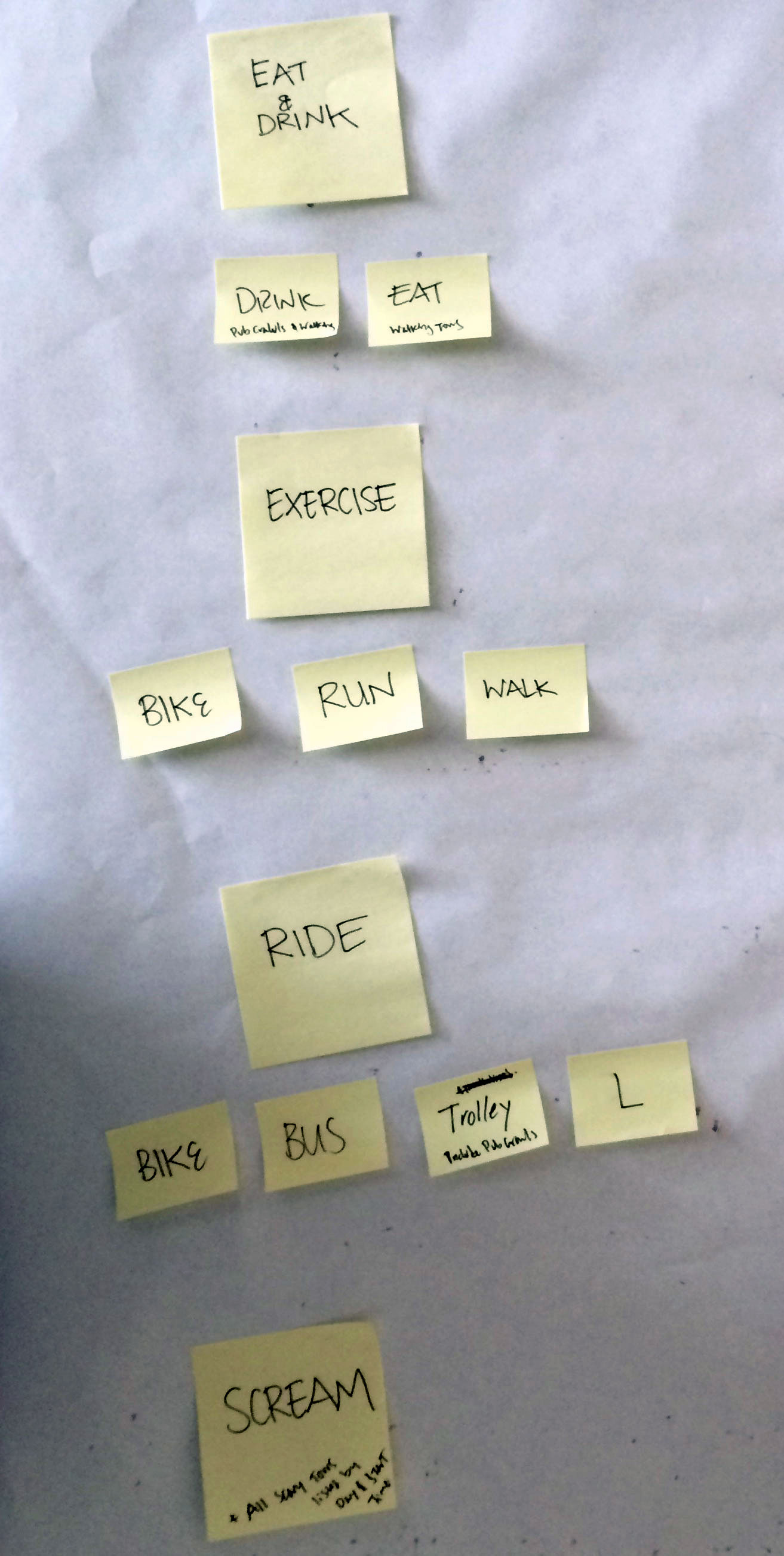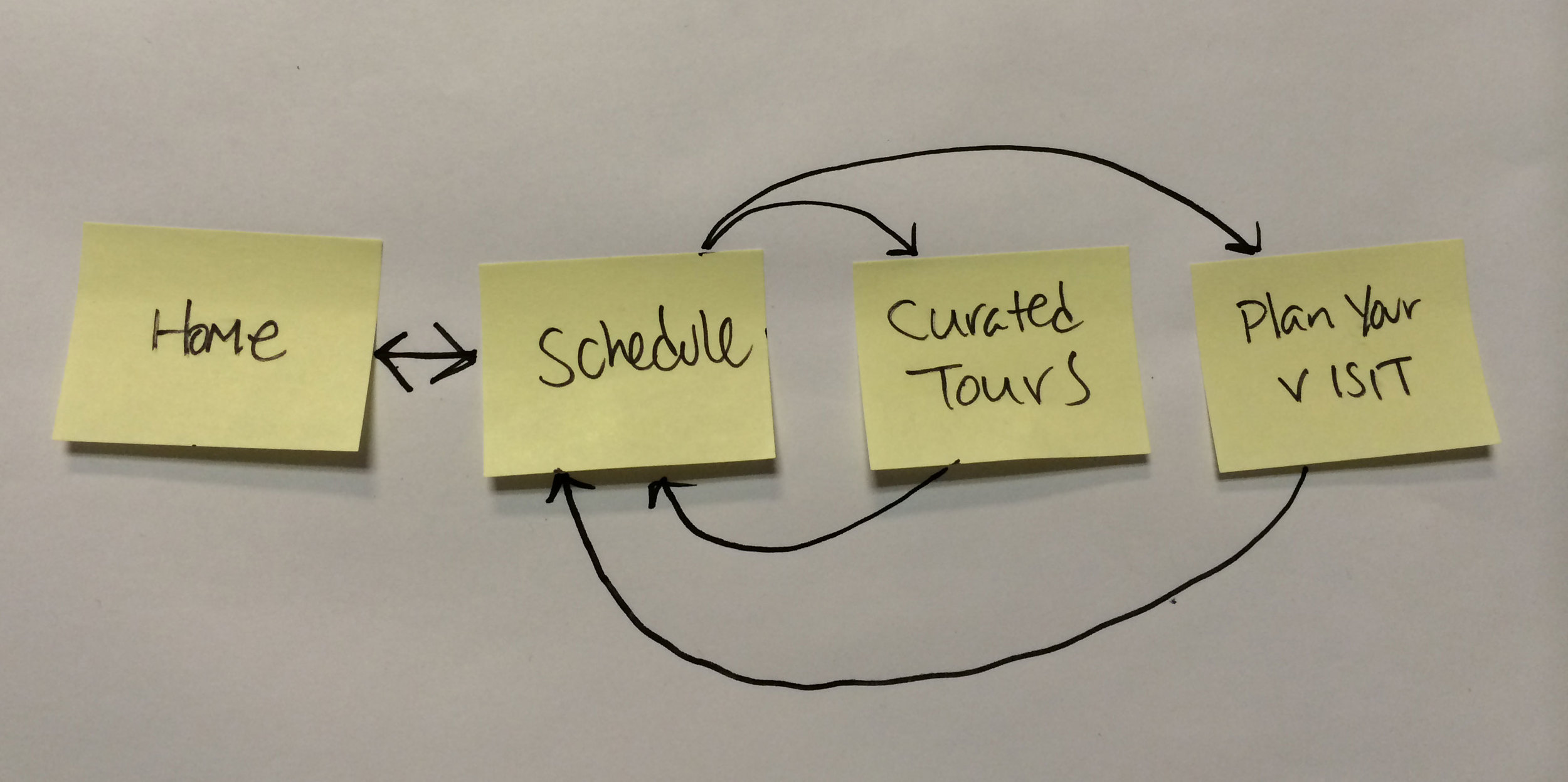Objective
To promote and sell tickets for the Chicago History Museum's Chicago 24 weekend event, by creating a branded microsite. See the finished product here: http://chicagohistory.org/chicago24
Responsibilities
Assisted with copywriting, editing, information architecture, prototyping, usability testing, visual design, web development, in addition to email marketing and managing the social media campaign.
Built with
HTML5, CSS3, jQuery, Foundation 5
Used
Microformats, Open Graph, SEO, Adobe Photoshop
Process
Need Finding
Why build a microsite? The current museum website is outdated, not mobile-friendly, and cannot handle listing Chicago 24's complex tour schedule.
Goal Setting
We needed to gain a complete understanding of the event in order to most effectively create a microsite that would fulfill the business goals of the Museum, and fulfill the needs of our main users (those trying to learn more about the event and purchase tickets).
We held three meetings over a month-long period with key Chicago 24 event stakeholders prior to building the microsite in which we discussed:
- Event concept
- Goal and audience definition
- Identifying promotional channels/opportunities
- Information gaps
- Understanding online ticket sales process and system limitations
- Managing expectations
- Resolving friction points including pricing, sponsorship, etc.
Synthesis and Planning
After a series of informational meetings, we synthesized and outlined our findings in a creative brief.
Industry Model
The website experience should provide a feeling similar to a music festival, where the city is the venue.
Business Goals
- Gain new customers
- City tour promotion
Current Audience
- Pub crawls have the most diverse audience, highest repeat audience
- Bus tour people are older (40-60), don’t really like walking
- Devil in the White City Bus Tour is the exception with people in late 20s-40s
- People on tours aren’t necessarily the type that go see our exhibitions
Complex Issues That Need Attention
- There is no central hub/meeting place for all tours.
- We need to communicate logistics clearly, manage expectations, and possibly include a map(s).
Value and Audience Motivation
- New Tours
- Flexible Schedule
Project Timeline
- 4 days for content gathering copy writing and editing, information architecture, and interaction design
- 10 days for web design and development, prototyping, usability testing, beta launch, fixes, optimizations
- 3 days for detailed review, last minute updates
Copy Editing
Without content there is no design, so the first thing we set out to do is edit all the original copy we were given. We had three aims when editing copy for this microsite:
- Avoid reading fatigue by keeping copy concise and skimmable.
- Eliminate internal language/staff vernacular.
- Clarify event details without losing personality.
Original
An Around-the-Clock Tour Blitz
Saturday–Sunday, May 3–4, 12:00 NOON–12:00 NOON
Ready. Set. Chica–GO! Mark your calendars. Synchronize your watches. CHM is taking over Chicago during the first weekend in May. Join us as we explore the city by bus, L, foot, bike, trolley, and more—all in just 24 hours. Whether you’re a history buff, health nut, or insomniac—we’ve got you covered!
Final
Experience Chicago in 24 hours
Saturday, May 3—Sunday, May 4, 12:00 p.m.–12:00 p.m.
34 history tours of Chicago taking place in 24 hours. Whether you’re a history buff, health nut, or night owl—we have a tour for you. Purchase your tour tickets and explore the city with us!
Original
Do you count your steps? Do you find yourself taking the stairs instead of the elevator? Are you looking to mix up your weekend workout? Then you are a History Health Nut. Warm up to history with this package of invigorating tours!
Final
Mix up your weekend workout while experiencing your city's history with this package of three invigorating tours.
Original
7 Wonders of Chicago
We know that Chicago is literally “wonder full,” but for the city’s 7 Wonders, what makes the cut? From our famous Chicago hot dogs (ketchup-less, of course), to our fantastic Blues scene, to the stunning lakefront, this is your chance to choose the wonders that best represent your city with public historian Josh Eisenberg.
Final
7 Wonders of Chicago
Chicago is full of wonders, from our famous hot dogs to our fantastic blues scene. On this tour, choose your own adventure and pick which city wonders you'd like to explore with public historian Josh Eisenberg.
Architecture
We took this hard-to-interpret event outline...
...and from it, the first renditions of site organization, navigation, and interaction were created.
Wireframes
From this point, lo-fi wireframes were sketched, illustrating potential layouts for both desktop and mobile views. Interactions were illustrated as well to show how a user could filter the tour schedule by interest or activity-type, and could expand tour descriptions to read details.
Prototypes
Due to limited resources, staff, and time, we jumped straight from lo-fi wireframes to a working hi-fi prototype. We felt it necessary to prototype the site structure and potential interactions as soon as possible in order to begin usability testing.
Usability Testing and Review
We wanted to know if the website's tour schedule, language, and navigation structure made the most sense to our users, and would provide them with the ability to quickly and easily make a decision to purchase tickets to tours.
The usability tests conducted were quick low-cost hallway tests. They included members of the Museum staff (Users A & B) who were unfamiliar with both the Chicago 24 event and our online ticketing process, but were within the target audience we were trying to reach.
One test user (User C) was the online ticketing system administrator, who we had review the site. Though she had expert knowledge of the ticketing system, she did not have any knowledge about the website we were building.
USER A & USER B
The Tasks
Take the Stapler Test
Explore the site.
Find and purchase a ticket to a specific tour.
Find and purchase a ticket to another tour.
User C
The Task
Take the Stapler Test
Explore the site.
Review the tour schedule structure.
Review the information for accuracy.
Main Takeaways
Be more explicit that this event is a series of city tours
Give visual sense of how many tours are available
Don't hide tour descriptions behind menu of times
Provide tour descriptions that are easily scannable
Explain the Tour Packages page is just a small curated selection of our entire tour offerings
Give ability to purchase individual tours within curated Tour Package listings
Make sure tour description copy in ticketing system matches what is on website to instill trust and reliability that all information is accurate
Make it easier to navigate back to website from ticketing system so people can have confidence in purchasing tickets to multiple tours
Final Product
Promotion
Social media was one of the main ways we engaged with our audience to promote this event. In addition to creating a branded poster campaign that illustrated the different actions each tour featured, we also ran a sweepstakes, encouraging people to retweet us in order to receive a chance to win tickets to one of the Chicago 24 tours.
Social media action poster campaign
Great Chicago Fire Twitter Sweepstakes
Outcome
We sold 402 tickets total, earning us $10,000. We broke even, which was right on the mark, as this was the first year hosting Chicago 24 to establish it as an annual branded event.
We had two initial business goals. We successfully met one:
- Gain new customers
- Based on a follow-up survey, 40% of Chicago 24 attendees were brand new customers who had never gone on a Chicago History Museum city tour before.
- Promote city tours, which the Museum puts on regularly year-round.
- We missed the mark in effectively using Chicago 24 as a vehicle to promote our regularly scheduled tours year-round.
- The message was not clear from the beginning that this event was merely a sample of the tours we do throughout the year, and not just a one-time thing -- we received multiple requests to do these Chicago 24 tours on other dates.
Reflection
We sought to create a powerful branded microsite that would both market the event in a visually appealing way, and overcome the limitations of the main museum website, but we could not rectify every limitation.
The ticketing system is outdated and not user-friendly as evidenced by our usability tests. We could refine the microsite to create the best experience possible for our users, but without replacing or completely redesigning the ticketing system (which is a much larger, long-term project), we were unable to eliminate every obstacle in the purchasing process.
Ultimately, the microsite provided users with easy access to event information so they could quickly make a purchasing decision, but once in the ticketing system, the act of purchasing was not always easy.
Only about 55% of tickets sold were purchased via the website. The remaining percentage was purchased by phone or walkup. Based on a follow-up survey, we received some complaints about not having a working print-at-home option tickets.
The effect of the ticketing system's problems has since opened up a larger conversation of undergoing a complete website and purchase system redesign.
Additional Improvements
Currently plans are in motion to make Chicago 24 happen again in 2015, based on the success of the first year. Three attainable improvements I would make to the microsite to enhance the experience would be:
- Allow users to filter by tour type/subject
- Suggest alternative/similar tours to users when a tour is sold out
- Print-at-home ticketing























